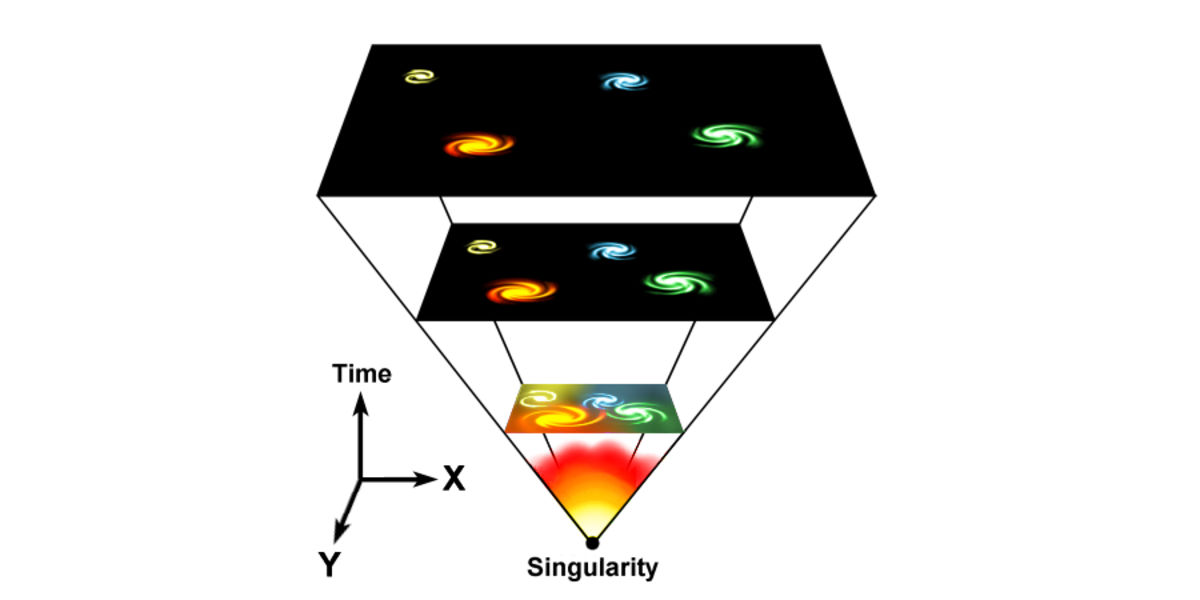In the realm of astronomy and cosmology, there is one underlying fact that seems to transcend all others - the Universe is expanding. This is not merely a hypothesis, but a theory backed by consistent, reproducible observations. Celestial bodies are constantly moving away from each other, leading to the predictable and continuous growth of the Universe. This was most famously proven by Edwin Hubble in 1929. This is the undeniable truth of the Universe's Expansion. But, what forces are at play that shape this celestial dance?
But Wait... Is the Universe Expanding at an Accelerating Rate?
As we delve deeper into the cosmos, further enhancing our understanding through advanced technology and refined perceptions, it's becoming clear that the Universe's expansion isn't a simple, linear process. Instead, something curious is happening. The Universe isn't merely growing—it's growing at an accelerating rate! This fascinating discovery, led by two different teams of cosmologists in the late '90s, startled the scientific community and won the 2011 Nobel Prize in Physics.
The Invisible Viaduct: The Role of Dark Energy
So, what's the fuel behind this rapid expansion? Scientists believe that an unseen entity, famously known as 'Dark Energy' is responsible.
Dark Energy is an enigmatic and immeasurable force that permeates the universe, endlessly pushing its boundaries, causing an accelerated expansion. Yet, being one of the Universe's largest components, it's invisible, unassailable, and largely undefinable. It's this astronomical paradox that continues to perplex the best of minds. The nature and essence of Dark Energy, therefore, is a formidable subject in cosmology, and its elusive properties play a vital role in our understanding of the Universe's health and trajectory.
As we dive further into the role of Dark Energy and the accelerating Universe, we introduce more questions than answers. While seemingly frustrating, this is at the very heart of scientific exploration and discovery. Science is the eternal pursuit of answers, and with any luck, the Universe and its mysteries will continue to fuel this quest.
The Stretching of the Cosmic Fabric: a Detailed Observation
As we delve deeper into the mysteries enveloped within our universe, it becomes clearer that the cosmic fabric is not a static formation. Rather, it is in a state of continuous expansion. The galaxies appear to be drifting away from us and each other, freeing up an ever-increasing space within the cosmos. Edwin Hubble was among the first to observe this in the 1920s, noting that galaxies seemed to be retreating from the Earth with velocities directly proportional to their distance from us.
Now, this idea of cosmic expansion might already present an exciting puzzle to grapple with. However, there is a twist. In 1998, something completely unexpected came to light. Astronomers studying supernovae observed that not only was the universe expanding, but this expansion was accelerating over time. Galaxies were moving away from each other faster now than they were in the past. This observation, contrary to the then-established theories, threw the scientific community for a loop.
Enter Stage: Dark Energy
It is essential to understand that the fabric of the universe does not expand into some pre-existing space. It is space itself that is expanding. But what is responsible for this accelerated expansion? The concept of 'Dark Energy' was introduced as an explanation. A secretive factor permeating all of space, causing the acceleration of the universe's expansion.
This invisible, mysterious entity comprises about 68% of the universe's total energy, according to current estimates. Calculations of dark energy come from the way its presence would affect the universe's expansion, modifying Einstein's equations of General Relativity. In these equations, 'cosmological constant,' originally brought about by Einstein himself, is said to correlate with dark energy.
The Bizarre Nature of Dark Energy
The actual nature of dark energy remains a mystery. It does not emit or interact with electromagnetic radiation, meaning we cannot directly see, hear, feel, or detect it with traditional methods. Despite this elusive nature, it has a profound impact on the universe at cosmological scales, overriding both gravitational forces and dark matter.
Several theories surround what dark energy could be. Some scientists speculate it could be a 'fifth force' — beyond the standard four forces that govern physics. Others suggest 'Quintessence', a dynamic, rolling energy field with density that varies in time and space.
The study and understanding of dark energy undoubtedly throw light on some of the most fundamental questions about our universe. As technology improves and we continue to probe the cosmos, we may inch closer to unraveling its mysteries. Until then, dark energy and the accelerating universe continue to puzzle and fascinate us and represent a monumental challenge for future explorations.




